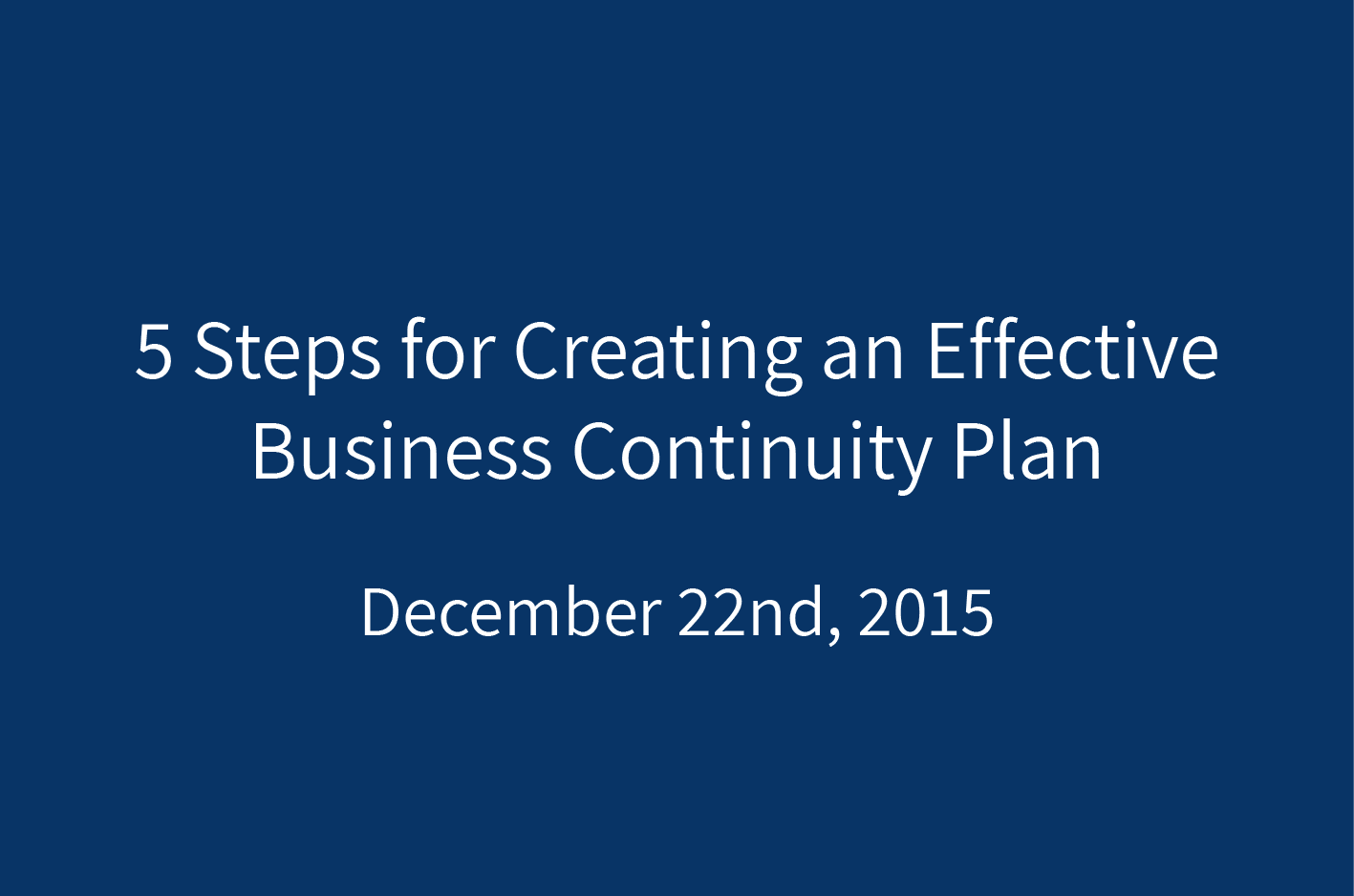How Often Should A BCP [Business Continuity Plan] Be Reviewed? [And When Should It Be Tested?]
Last Updated: September 19, 2023
The process of developing, finalizing, and communicating your initial business continuity plan (BCP) is no small feat. However, ongoing monitoring and reviewing of your BCP is critical to account for both internal and external changes that may impact your business. So how often should your BCP be reviewed? This blog post will dive into the answer to that question, as well as the results you’ll see from an effective business continuity program, the benefits of conducting business continuity planning, how to improve your organization’s business continuity planning process and more.
How Often Should A BCP Be Reviewed & Tested?
As a best practice, your BCP (business continuity plan) should have a scheduled review annually at a minimum, as well conducting a business review whenever something in your business changes (e.g. a process, product, service, etc.) or there is an external factor impacting your business (e.g. environmental changes, new regulations, an acquisition, etc.).
What are the results of an effective business continuity program?
Having an effective business continuity plan review process can impact your business in many ways:
Better resource planning
With a complete profile of business unit information mapped out within your business continuity plan, you can identify critical functions and analyze the impact they have on your organization. As a result, you’ll be able to better allocate the necessary resources and ensure that backup strategies are in place to maintain basic operations following a loss or outage.
Added insights
Gain insight into which business units are most critical to business operations, which are prepared for a business continuity event, and which need to be reevaluated. Housing everything in one centralized program allows you to quickly and easily navigate to the right resources amidst an emergency event.
Reduced losses
Having an effective business continuity plan allows you to create various scenarios and recovery strategies for recovering in the case of any losses.
This enables you to take a proactive, risk-based approach to your organization’s recovery and get back up and running sooner, reducing losses.
What are the benefits of conducting business continuity planning?
Having a formalized process in place for business continuity planning yields a variety of benefits for your organization. Let’s dive into a few of them:
Overcome challenges more quickly
Relying on reactive efforts following a business continuity event leads to higher probability of missteps that could only catastrophize the problem at hand. If you’ve actively invested time and energy into preparing for any potential risk before it manifests, if and when it does, your BCP will direct you to the necessary resources to return to business as usual. This approach results in less collateral damage and shorter downtime periods.
Identify critical areas of improvement
Building a business continuity plan with an enterprise-wide approach empowers your frontline employees to identify dependencies across your organization. This offers better insight to improve your plans; by looking at common risk factors across all departments, you’ll be better enabled to identify unique risks on a function-by-function basis, see which risks are specific to certain teams and which are prevalent throughout the entire organization.
Increase stakeholder confidence
Investing resources into developing a strong BCP assures vendors, investors, customers, employees, and regulators alike that your organization is being run properly. Mitigating risks before they happen is good governance, and that demonstrates corporate responsibility and fosters a positive corporate culture.
Related Post: We compare business continuity and disaster recovery here
How can I improve my organization’s business continuity planning?
Depending on how mature your business continuity management program currently is, there are several ways to improve. First and foremost, without software streamlining your business continuity planning process, reviewing and optimizing your BCP for success can be extremely difficult.
That’s because your business continuity plan is inherently central to being prepared for potential disruptions and solidifying trust with external parties such as vendors, clients, or potential shareholders.
Your organization has multiple business units, functions, teams, and products to keep track of, and lacking insight into which aspects are critical for internal operations and which provide critical services to your downstream dependencies will hinder you from being able to properly allocate resources and lengthen the time of delays.
Here’s a step-by-step outline for improving your business continuity planning process using risk-based software:
- Start by identifying your most critical processes. When a business continuity event occurs, ERM software enables you to understand what the most critical processes to your organization are that need to be prioritized first to get back up and running to minimize any impacts.
- Assess the various risks your organization faces. By evaluating all of the various types of risks that a business continuity event could bring up – such as financial, reputational, customer, legal or strategic impact – you’re able to adequately determine which steps must be included in your BCP to minimize those impacts.
- Mitigate with purpose. Building a business continuity plan through a risk-based lens empowers you to design more effective policies, procedures, and other controls that simultaneously minimize the impact of the disruption at hand.
- Monitor the effectiveness of your plan over time. Continually monitor the effectiveness of your mitigating efforts using automated software to ensure that your BCP is directly aligned with your most up-to-date risks.
- Connect your departments. Your business continuity plan does not exist in a vacuum. Using integrated software allows you to identify interdependencies that must be known if an event occurs to ensure all steps are taken.
- Report historical data. Reporting is a key step in any risk-based approach, as it reveals patterns over time so that you can improve your BCP where needed and keep your organization protected from any future disruption.
Conclusion: Why Complete A Business Continuity Plan Review
When calamity strikes, it shouldn’t be a scramble to get your business back up and running.
Ensuring consistent updating of your BCP as well as having reliable disaster recovery plans helps ensure that no matter how much stress your business is put under, you have steps in place that eliminate uncertainty and minimize downtime.
This means including everything in your BCP that you need and knowing which functions of your business are the most critical, which resources employees use to keep crucial processes functioning, and the recovery steps for getting those functions and resources back online should havoc come to visit.
While doing all of this for disaster recovery may deem you a superhero, superheroes are only as good as their sidekicks. Consider LogicManager’s business continuity planning software as your new sidekick:
- Easily access, review and update all of your business continuity and disaster recovery plans (like business processes and related assets) within one centralized framework.
- Manage your responsibilities and track the status of your projects with easily accessible to-do lists.
- Improve coordination between business continuity, disaster recovery, and crisis response teams with automated tasks, alerts, and reminders.
- Ensure the BCP you have in place is operational and effective with automated testing.
- Link risks and controls directly to the business continuity plans they relate to with our taxonomy technology.
- Evaluate the criticality of each business process with pre-built, intuitive business impact analysis templates.
- Track business continuity events when they occur, identify the gaps in your plans, and determine follow-up improvements to your procedures with our intuitive incident templates.
- Prove BCP compliance to auditors and BCP effectiveness to senior management with highly configurable reports and compliance checklists.
With your business continuity planning process improved, you can focus on going beyond the call of duty. At its core, our business continuity planning software is designed to help you align strategic goals with operational objectives.
By giving you an enterprise-wide view of your risk and a risk rating at all times, LogicManager’s business continuity management program not only drastically reduces the time and money you spend on business continuity management, but it also helps you prove your invaluable impact on your company’s success with a comprehensive review to reduce internal and external factors threatening your organization.




